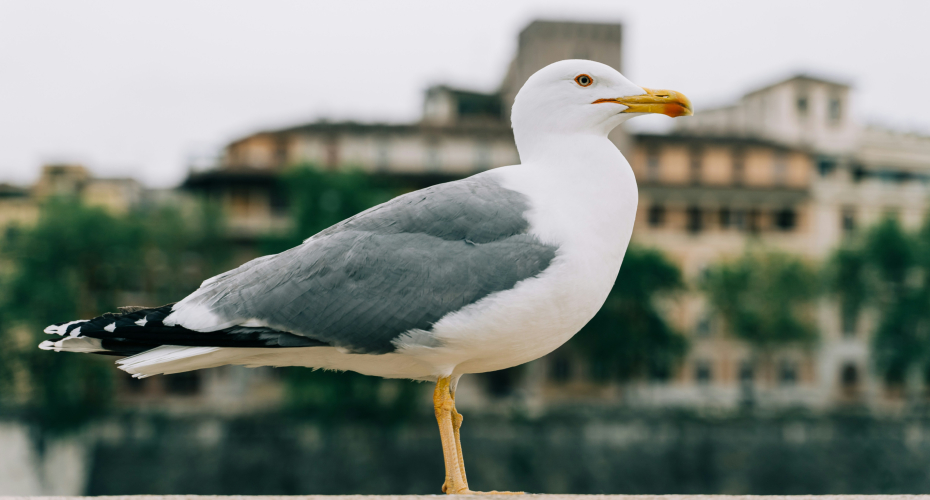Bigger brains allow cliff-nesting seagull species to survive and thrive in urban environments

Photo by Dastan Khdir on Unsplash
Seagull species that have bigger brains are more likely to nest on coastal cliffs and may also be better adapted to breed in urban environments such as on the roofs of buildings.
New research has found that more than half of cliff-nesting gull species have been recorded as nesting in towns and cities, compared to just 11% of those that do not, and these species have bigger brains than their non-cliff-nesting counterparts.
The findings come in a broad-ranging study by ecologists at the University of Exeter looking at potential relationships between brain size, wing shape, nesting habits and the use of urban areas.
It suggests that species such as the Herring Gull, the Lesser Black-backed Gull and the Black-legged Kittiwake possess a behavioural flexibility that enables them to nest in more challenging locations.
“Many people will be familiar with gulls nesting and foraging in urban areas,” says lead author Dr Madeleine Goumas, formerly a Postdoctoral Research Associate in the Centre for Ecology and Conservation, based at Exeter’s Cornwall campus in Penryn. “It’s not something you might expect from a seabird, so we wanted to try to understand why they do it.”
Dr Goumas and the team searched research databases to find records of urban breeding and foraging among gulls and mapped the range of the different species.
Thirteen of the 50 gull species were recorded as using urban areas to breed, while 13 gull species are known as urban foragers – with nine both breeding and foraging. When they compared the figures for breeding with the known habits of the birds, the team identified 10 of the 19 (53%) cliff-nesting gull species among those found to have nested in urban settlements, whereas only three of 28 (11%) non-cliff-nesting species were found to have done likewise.
“We found that gull species with larger brains are more likely to be cliff-nesters, and cliff-nesting species are more likely to breed in urban areas,” says Dr Neeltje Boogert, Royal Society Dorothy Hodgkin Research Fellow. “We also found that cliff-nesting is probably not something that was shared by the ancestor of gulls, so it is a relatively recent adaptation.”
“It’s also not a fixed behaviour in most gulls,” adds Dr Goumas. “While non-cliff-nesting species nest exclusively on the ground, most cliff-nesting species nest either on cliffs or the ground. This suggests that bigger brains enable these gull species to be flexible with regard to where they choose to nest, and this allows them to use unconventional sites, like buildings, for raising their young.”

When it came to foraging, the researchers found that neither brain size nor the shape of the wing, which affects manoeuvrability, were robust indictors of seagull behaviour in urban environments.
Finally, the researchers looked at the status of the gulls on the International Union on Conservation of Nature and found that those with stable or increasing populations were more than twice as likely to have been recorded using urban habitats than those that are decreasing. Of the ten Threatened or Near Threatened species, only one – the Black-legged Kittiwake – was known to use urban habitats.
“Whether or not species use urban areas has important implications for conservation,” says Dr Boogert. “If we can understand the factors that allow animals to use urban areas, we can better understand how to help those that aren’t faring so well.”
“Urbanisation is a major problem for a lot of animals,” concludes Dr Goumas. “It looks like some gull species have managed to overcome some of the challenges that prevent other animals from using urban areas, but we need more long-term studies as well as comparative studies on other taxa to fully understand the impacts of urban living.”
The study builds on a body of research conducted by the team on gull behaviour, including how they favour food humans have handled and how staring at them makes them less likely to steal your food.
From the sea to the city: explaining gulls’ use of urban habitats has been published in the latest edition of Frontiers in Ecology and Evolution.



